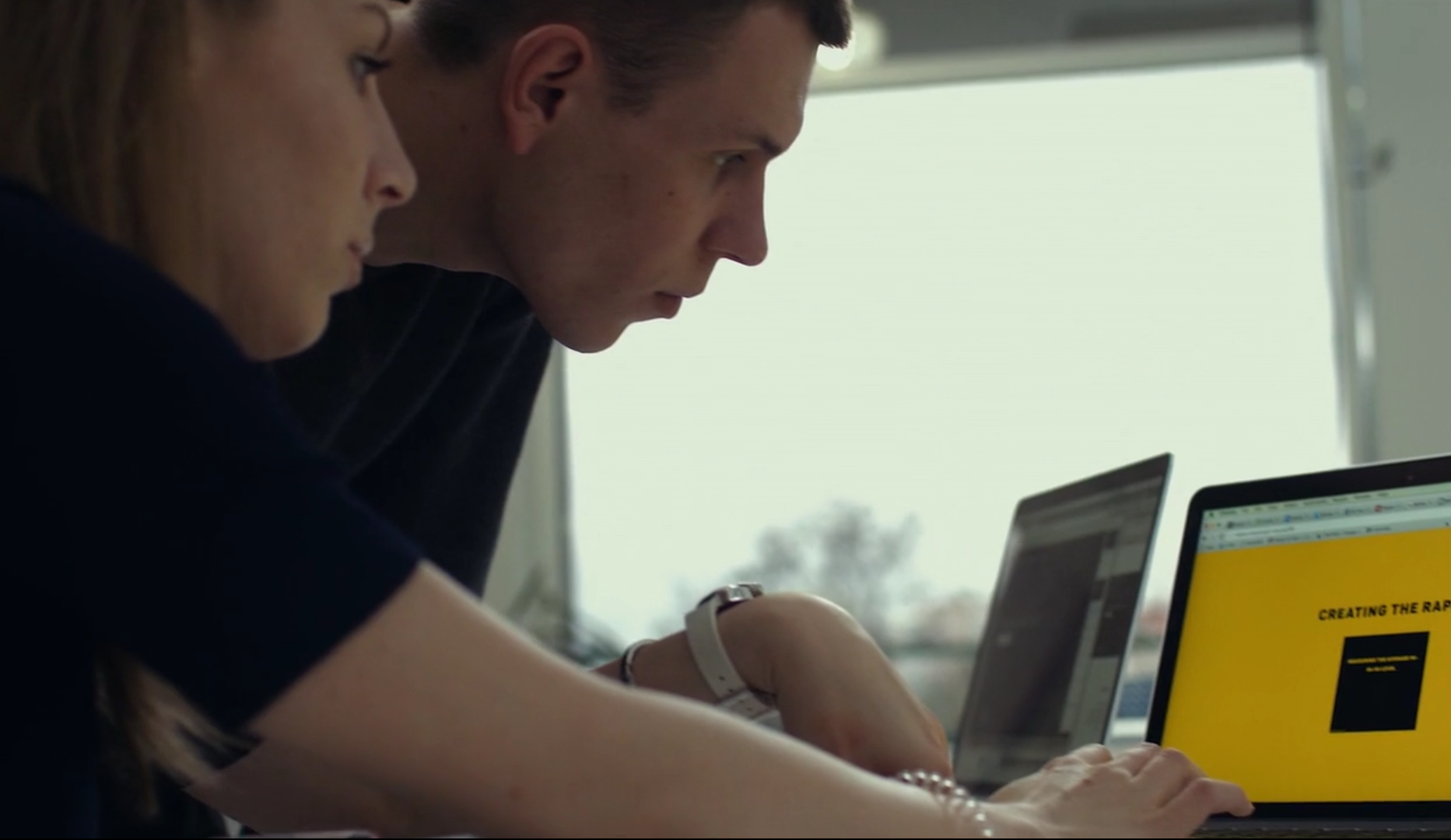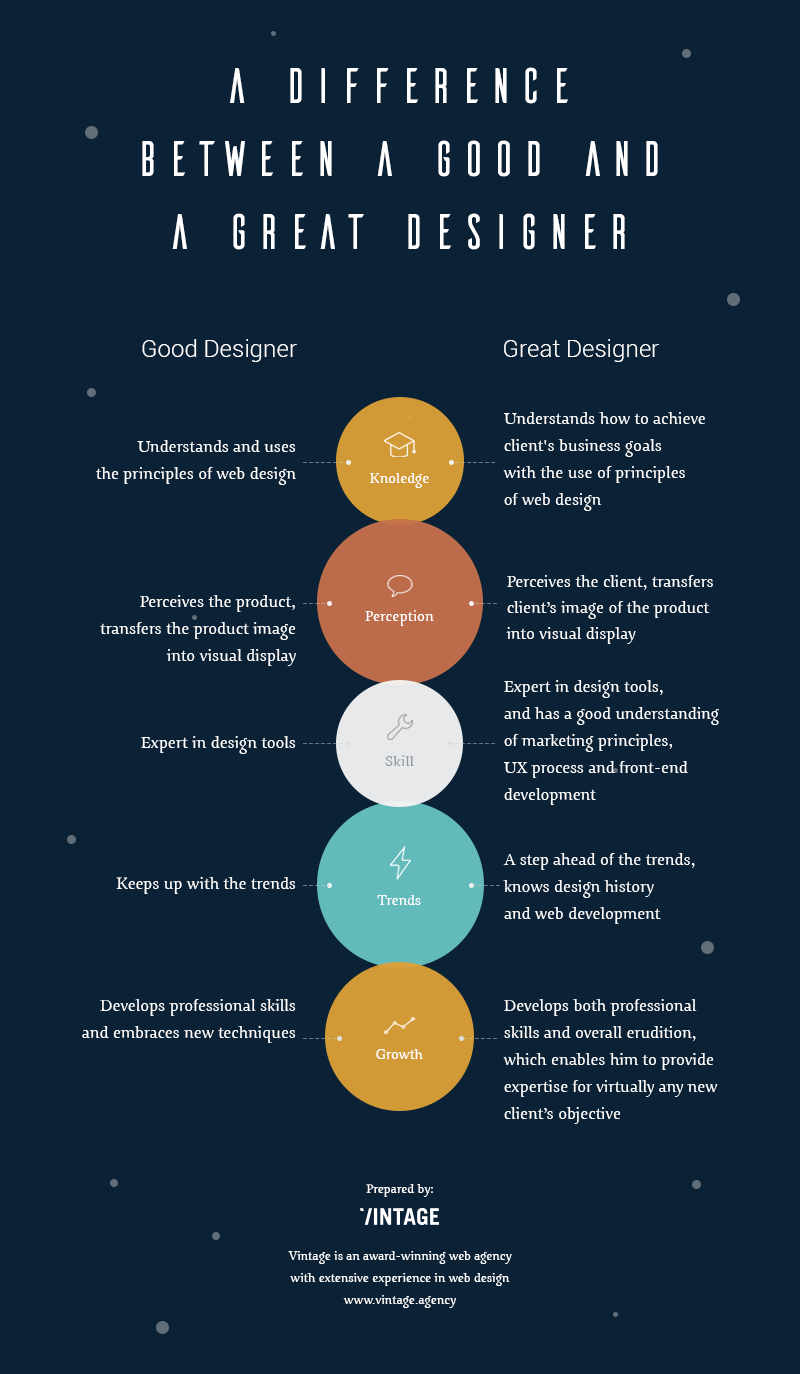Nowadays, everything starts with design. Things that surround us have become so obvious that most people do not realize there is a designer behind each of them. It all has to be designed before it’s brought to life: cell phones, cars, clothes, food, and - of course - websites. So, who are the designers, after all? Who are these people that make their imagination change the look of the world? And most importantly, how do they do it?
Let us find out. And while we are at it, we will welcome some pieces of insight, provided by our guest expert, Jacob Cass - a renowned web designer from New York city, and founder of JUST™Creative design studio.

Designer vs Artist: similarities, differences, misconceptions
Many confuse a designer with an artist, and there is solid ground for such misconception. Like an artist, a designer has to create something from nothing, and produce forms and shapes with mere imagination.
However, the very core of being an artist and a designer diverges dramatically. An artist creates things just for the sake of it, regardless of what use they may or may not come of. A designer, on the other hand, has to put meaning in their works, so that their creations would accomplish what they were made for.
A designer is a visual engineer, who translates technical description into visual display. When a designer draws a straight or a curved line, they don’t do it just because. They think of what purpose those lines aim to achieve.
Artist’s and designer’s vision are also different. Art is always subjective. An artist produces a painting out of inspiration, without knowing who would actually appreciate it. A designer cannot afford their work being rejected. Their vision has to be objective, because they know exactly who their works are aimed at.
“A designer is more focused on addressing a problem for a certain audience. An artist is often creating for themselves without solving a defined problem”, says our expert Jacob Cass.
The final difference between designer and artist is the methods they use. Art favors talent over education. There are bright examples of famous artists, who never had any school. A designer with no academic background is hard to imagine.

A designer with technical drawing skills only, is just a decorator. A true designer has to have some points scored in marketing, user experience, HTML programming and front-end development. Only then he would be able to achieve what his clients require from him.
Essence of a web designer
So, which web designer qualities must one embrace to produce world-class, award-winning websites? Firstly, it’s knowledge.
It is presumed that a person must understand composition outlook, color matching, attention accents, the flow of visuals and typography in order to be considered a web designer. They must also be an expert in their software of choice, be it Photoshop, Illustrator, Corel etc.
But the obvious web designer qualifications and skills are not enough. Designers have to perceive the products they are visualizing. The main idea is to see the reason behind every project. A designer may not deal with the client directly, but at the end of the day, they have to figure out what the client expects to achieve with their work.
“Based on my experience on being an interactive designer focused on UX and UI design, I believe what makes a good web designer is a thorough understanding of design principles, the knowledge of how web pages are constructed, the basics of SEO and knowing how to take the website to the next level, telling the story of a brand or a business”, Jacob shares.
A web designer’s workflow
Let us now look behind the curtains of a web development project, and identify the designer’s role in it. The starting points of every project are usually similar:
- Define the market (what the website will sell or promote);
- Define the client’s market stand (new to market, key player, follow-upper etc.);
- Define the client’s strategy (aggressive, maintaining, innovative or differentiating).
The above is done by every web production company, but what many companies fail to do is include the designer in the process. It would seem that a designer has not a lot to say on sales and marketing, but diving deep into the subject is what helps them make pinpoint product visuals.
An artwork that looks pretty by itself may not always work well for the client’s objective. A designer should not just embrace the task at hand, but also the background behind it.
To do so, a designer must be a part of the team that researches the product. The four questions the team has to find answers for are the following:
- What the product is made of?
- How it is made?
- What its main purpose is?
- What its bright and dark sides are (and from which perspective it is better to present it)?
After that is settled, the team begins to work the prototype. Below are the simple steps, which have to be followed by a project team (not the designer alone!), so everyone lays down their expertise on the table.
Step 1. Define content. The hardest part. Based on the market and product research, you have to state your key messages, and put flesh on their bones (i.e. write the relevant texts).
Step 2. Formulate blocks. Here is where UX and UI designers must work in tandem. Blocks have to be identified based on expected user response, and ranged by importance and screen space share.
Step 3. Build the prototype and finalize it with client or project manager. If the project is big, several iterations may be required.
It is commonly argued that a designer and he alone is responsible for the final look of the product. The truth is, however, that without teamwork, no product would actually look like it does. Here is one more difference between designer and artist for you: a designer has to be part of the team!
Good and Great designers
How do good designers become great ones? Not within a day, that is for sure. It takes time to build up experience and develop the skill. Practice makes perfect, but nothing can be achieved by practice alone. A good designer has to change their approach to work and client communication if they are set to become more than themselves.
Firstly, a designer must take a leap from product perception to client perception. When you communicate with your client and are able to read between the lines of his business ideas, the client will always get an ideal result from you.
Listen to your client carefully, but do not make them your boss. On the contrary, it is you who should tell the client what is good for them.
Next comes self-education. Do not stop at being an expert in design only - reach out to embrace such cross-industry skills as copywriting, UX engineering, SMM and programming. This will let you see the bigger picture in every project you do.
“The digital industry is changing at a rapid pace so to keep growing you need to keep up with the industry itself. Practice and trying new things is really the only way to excel here”, says Jacob.
And finally, learn to stay ahead of the trends. A great designer is a trend-setter. One thing is to do something because it’s cool, and another one - to do it before it becomes cool.


View Comments